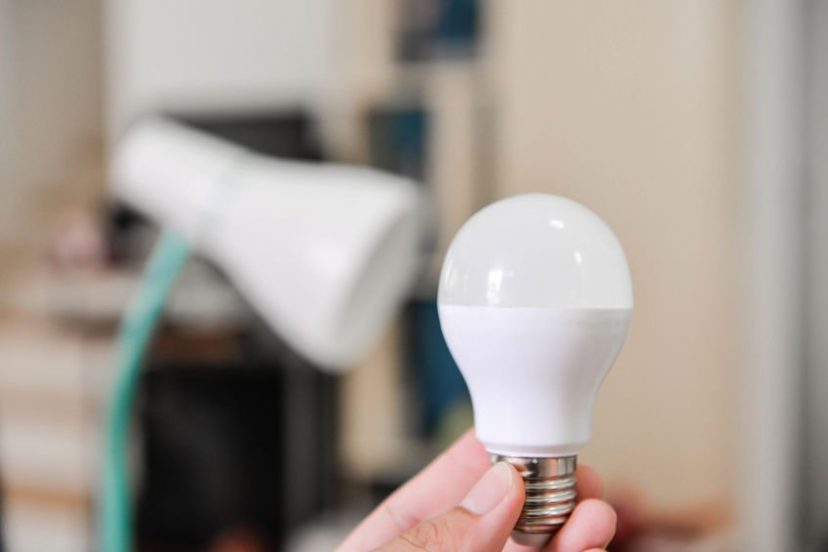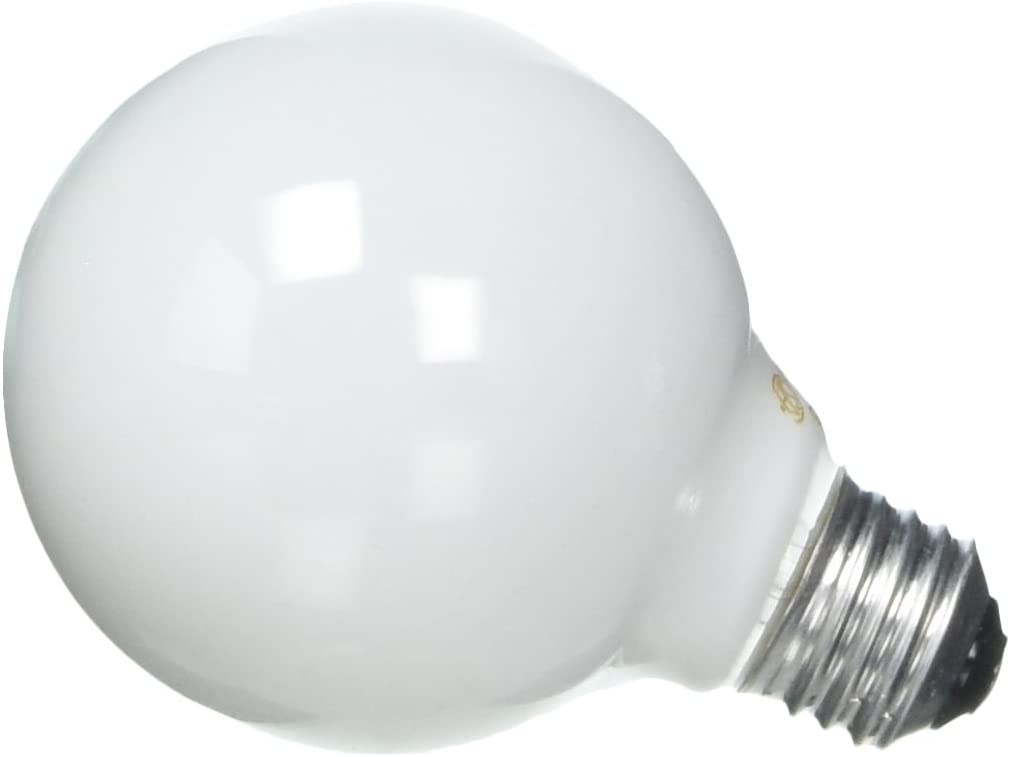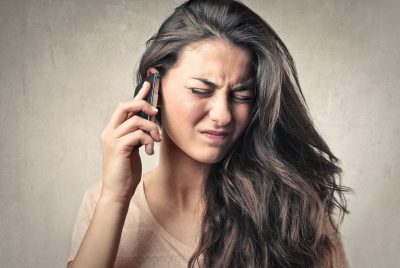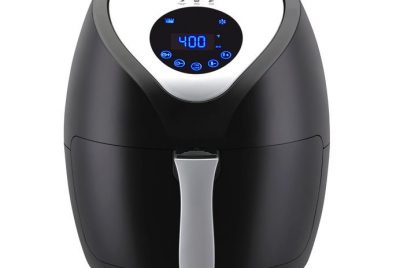On April 3, 1973, the first mobile phone was created. Since then, cell phone technology has…
Are LED Lights Safe? A Look at Radiation, Blue Light and Other Potential Risks

*We may earn a commission for purchases made using our links. Please see our disclosure to learn more.
Light-emitting diode (LED) technology is present in many homes. From the face of your digital clock to the bulb in your lamp, LED lights have a variety of common applications. Given how popular these lights have become since their widespread introduction in the 1970s, it’s natural to wonder: are LED lights safe?
In this guide, we will attempt to answer that question. We will dig into the history of LED lights, how they were developed, and the potential health effects of exposure. While only you can decide if LED bulbs are right for your home, knowledge can help guide your decision.
LED lights
To start, let’s talk a little about diodes. A diode allows energy to flow in one direction. An individual LED light consists of a diode made from a positively charged anode and a negatively charged cathode, with a semiconductor (usually made from indium-gallium-nitride,) in the middle. As electricity flows through the anode and cathode, electrons fill holes in the semiconductor and electroluminescence can be observed.
Electroluminescence itself can be dated back to 1907, when Henry Joseph Round noticed a faint light coming from Silicon Carbide. It wasn’t until 1961, however, that researchers were able to use electroluminescence to create a light bright enough to be of use. The first LED lights were born, and the technology only grew from there. By the mid-1970s, yellow, red, and green LED lights had been developed.
Researchers continued to experiment with new types of LED lights throughout the 1980s and 1990s. By 1994, Shuji Nakamura discovered how to create a bright blue LED light. Shortly after, scientists tried using fluorescent phosphors to coat the bulb’s blue light emitting chip. The end result was a vibrantly bright white that is characteristic of modern LED bulbs.
Consumers began switching to LED bulbs primarily because they were much more energy efficient than their traditional incandescent counterparts. And now only did they use less energy, but they lasted longer, too. The initial investment was steeper than with an incandescent bulb, but LED lights were thought to save money in the long run.
At first glance, LED lights indeed sound pretty great. And while one can’t ignore their benefits, we would be remiss if we didn’t address their drawbacks, as well.
LED lights and radiation
As mentioned, LED lights are very energy efficient. This may be great news for your electricity bill, but if you are familiar with dirty electricity, you may already know why this efficiency isn’t always desirable.
Power lines transmit a certain amount of power. In the United States, we use 60 Hz AC electricity, although much of the rest of the world uses 50 Hz AC. Either way, more energy efficient devices do not require that much electricity to operate, but the outlet the device is plugged into is still receiving that much power. Some of that charge is turned away, where it returns, unused, to the home’s wiring. This is known as dirty electricity, and it can be problematic for certain individuals. Symptoms such as headaches, dizziness, and nausea have been associated with dirty electricity exposure. Dirty electricity is a type of extremely-low frequency (ELF) EMF radiation, as well, which has potential ties to childhood leukemia.
You can measure dirty electricity from LED lights and other devices in your home using a process we will detail below.
LED lights and blue light
Dirty electricity is certainly one negative side effect to LED lights, but it’s far from the only one. Recall, for a moment, when we talked about how the modern LED light bulb was made. The base of the modern LED is an ultra-blue light emitting chip, covered up with another substance to create what is ultimately a crisp, white light.
That white light isn’t the only type of LED out there, but it is one of the more common ones. You may see these lights labeled as “cool.” If you were to analyze this light with a spectrum analyzer, you would find that a great deal of the visible light produced by the bulb falls within the blue light range of the electromagnetic spectrum.
These blue-light rich LED lights are widely available, and commonly used in homes and retail shops. The problem, however, is that blue light isn’t necessarily healthy, especially in large and seemingly constant quantities.
Globally speaking, some government agencies acknowledge the risks associated with blue light. The French Agency for Food, Environmental and Occupational Health & Safety, for example, recommends limiting cool-white light exposure. Their recommendations were based on the possibility of retinal damage to the eye, ultimately leading to Age-Related Macular Degeneration (AMD). It was discovered that this damage was possible after either long durations of dim exposure or short durations of bright exposure to blue light.
It’s also worth noting that children don’t have fully developed eyes until age 20. Because their eyes are not capable of filtering out light as an adult’s, they are especially susceptible to damage from blue light exposure. Night shift workers, pregnant women, and seniors are also in this vulnerable category.
In addition to vision problems, blue light has been associated with a number of other issues. Some report migraines after LED light exposure. Others experience seizures and other neurological problems. Visual disturbances, nausea, and eye strain are also all common after blue light exposure from an LED bulb. Furthermore, blue light prevents our bodies from naturally producing melatonin, which can wreak havoc on our sleep-wake cycles.
While blue light may not be a form of EMF radiation, specifically, it is still a danger worth mentioning when it comes to LED lights.
Safer alternatives
LED lights may be one of the more commonly available bulbs out there, but there are still safer options available. In this section, we will look at some devices that frequently use LED lights and what non-LED options are out there.

Instead of: an LED light bulb
Try: GE Incandescent Globe Soft White Bulbs. Incandescent bulbs are the older style light bulbs that produce light due to the heating of an interior filament. These lights may not be as energy efficient or long lasting as an LED, but they are less expensive off the bat and they generate less dirty electricity. Furthermore, the soft white light produces minimal amounts of harmful blue light. Swapping out your home’s LED bulbs with soft white incandescents may be the single biggest thing you can do to reduce LED-related blue light exposure.
Instead of: an LED alarm clock
Try: Jall Wake Up Light Sunrise Alarm Clock. This clock does come with a red-based LED time display, but you can easily turn the display off at night if you find the light disruptive. The real draw for this alarm clock is its natural sunrise feature. A warm light is very slowly and gradually produced at a set time in the morning, allowing you to wake up naturally and without being jarred awake by your alarm. Basically, the light disrupts the natural production of melatonin in your body, naturally allowing you to shift out of sleep mode.
Reducing your exposure
If you must use LED lights and other LED products in your home, you can still take steps to reduce your exposure levels and decrease your risk of experiencing health effects from dirty electricity and blue light.
- Turn off the lights. This is a good rule of thumb in general, but especially if you use LED lights at home. When you’re not in the room, turn off the light. If it’s during the day and natural light is adequate, keep the light off. You may also want to invest in one or two lamps that use traditional, incandescent bulbs, as well. This is helpful for those last few hours before bed. Blue light, as you now know, is no friend to your body when trying to sleep. Soft light from an incandescent bulb is less likely to disrupt your body’s production of melatonin, so try and choose that exclusively before bed.
- Keep your distance. If you have an LED TV at your home, or you use an LED alarm clock, keep your distance from those devices. Exposure to EMF radiation is highest when you are closest to the source.
- Use a dirty electricity filter. These filters are installed on each circuit of the home and can dramatically reduce the amount of dirty electricity present. You can measure the efficacy of your filter using a device such as Stetzerizer’s Microsurge Meter. This is a unit capable of measuring the amount of dirty electricity in your home. Try taking a measurement before and after installing your filter for best results. To learn more about filters and measuring dirty electricity, see the Top Five Dirty Electricity Filters.
- Try blue light glasses. To reduce the effect of blue light on your health, you can try a pair of blue light reducing glasses. LNEKEI’s Blue Light Blocking Glasses Three-Pack is one excellent option. Wear these around the house, especially when working in close proximity with LED lights. They are designed to reduce eye fatigue and can even reduce glare when driving at night.
Parting words
LED lights may be energy efficient and inexpensive, but that doesn’t necessarily make them safe. If you have concerns, consider switching to incandescent lightbulbs or taking steps to reduce your exposure levels.
For more information on this topic, see “Light Bulb EMF Radiation: Everything You Need to Know.“



